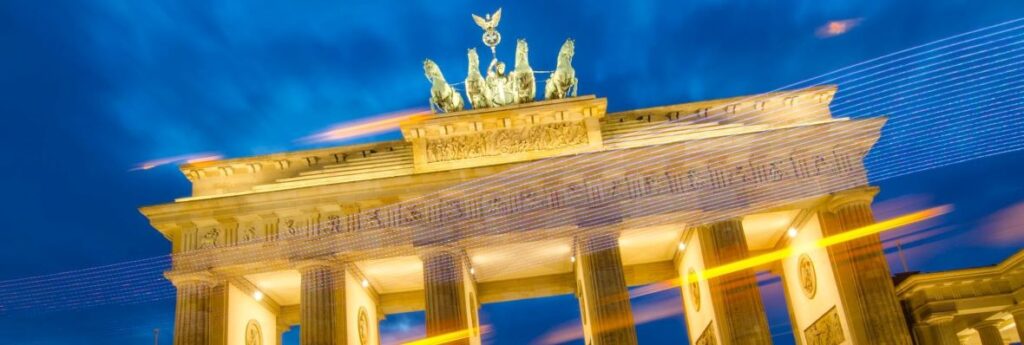By Michael Baginski/ There’s no better time for Canadians to discover, or return to, Berlin – on many levels – says the CEO of Visit Berlin, who noted to Canadian media last week that, “When we read the news about south of here, we immediately thought that we should go and visit our friends in Canada.”
Referencing the city’s landmark Brandenburg Gate, Burkhard Kieker added, “Our hearts and gates are open to you,” and he laughed, “Germans don’t want to go to the U.S. either. I hear that Lufthansa occupancy is down, except for all the diplomats in First Class.”
But Canadians’ desire to find new, non-U.S. destinations for their summer holidays is only one reason to visit the German capital, continued the affable Kieker, a through-and-through Berliner who personally witnessed the fall of the infamous Berlin Wall in 1989, and noted, “If you want to experience history from the 20th century, for good and for bad, you can find it in Berlin.”
Another reason to visit now are new flights to the central European gateway by Transat, which start June 19 with weekly seasonal service through Oct. 24, with the airline’s National Sales Manager Jhadyd Gonzales stating, “Berlin remains one of Europe’s most visited cities, and it was clearly underserved. There’s a lot of demand for Berlin.”
In 2024, over 50,000 Canadians visited Berlin, staying on average three nights.
The Air Transat service underpins a Canadian campaign by Visit Berlin that features a beaver sharing a hug with a (Berlin) bear at the Brandenburg Gate, with the slogan ‘Come for a hug. Visit Berlin.’
Kieker acknowledged that the city’s past colours its present, stating, “Berlin is the city of freedom that brought down a dictatorship without bloodshed.”
And that freedom is now part of the city’s DNA in many related ways, added. “We developed freedom to test your own lifestyle. It’s a very tolerant city. If you feel like dressing like a zebra and go to the subway, nobody will event take notice!”

As such, Berlin can be a little bit “wild,” where anything goes and is “always now” Kieker said, leading to it being a leading centre of arts, music and fashion, and earning the nickname, “The Cool Capital of Europe.”
That includes a vibrant dining scene, that boasts 21 restaurants with 28 Michelin stars, as well as a new restaurant at the top of the Berlin Tower.
Unsurprisingly, there’s a full calendar of concerts (including opera that is easier to book than in other European cities), 78 theatres from which to choose, and numerous festivals and events, including the Festival of Lights (Oct. 8-15), and Berlin Freedom Week (Nov. 8-15). Even Cirque du Soleil is set to take residency in the city’s entertainment roster in September.
“Berlin is 24/7. You can find what whatever you want,” said Kieker, who noted the mobile Berlin Welcome Card (starting at $150 and representing $700 in value) offers free transport on all public transport for 3, 5 or 7 days, plus free entrance to 27 attractions.
Of course, there’s also the history, as illustrated by this year’s 200th anniversary celebrations for the city’s famed Museum Island, which encompasses five world-famous museums that have collectively garnered UNESCO World Heritage status.
Of more recent vintage, the city’s Imperial Castle has been rebuilt to serve as another museum venue.
At the same time, visitors can still see bullet holes in the Brandenburg Gate from World War II, which the city consciously refused to fill.
“Berlin is living history, especially for those lived in World War II, and a city that still shows its wounds,” said Kieker. “We say, ‘we have our history, come and have a look’ – but Germans have changed a lot.”
If this article was shared with you by a friend or colleague, you may enjoy receiving your own copy of Travel Industry Today with the latest travel news and reviews each weekday morning. It’s absolutely free – just CLICK HERE.

